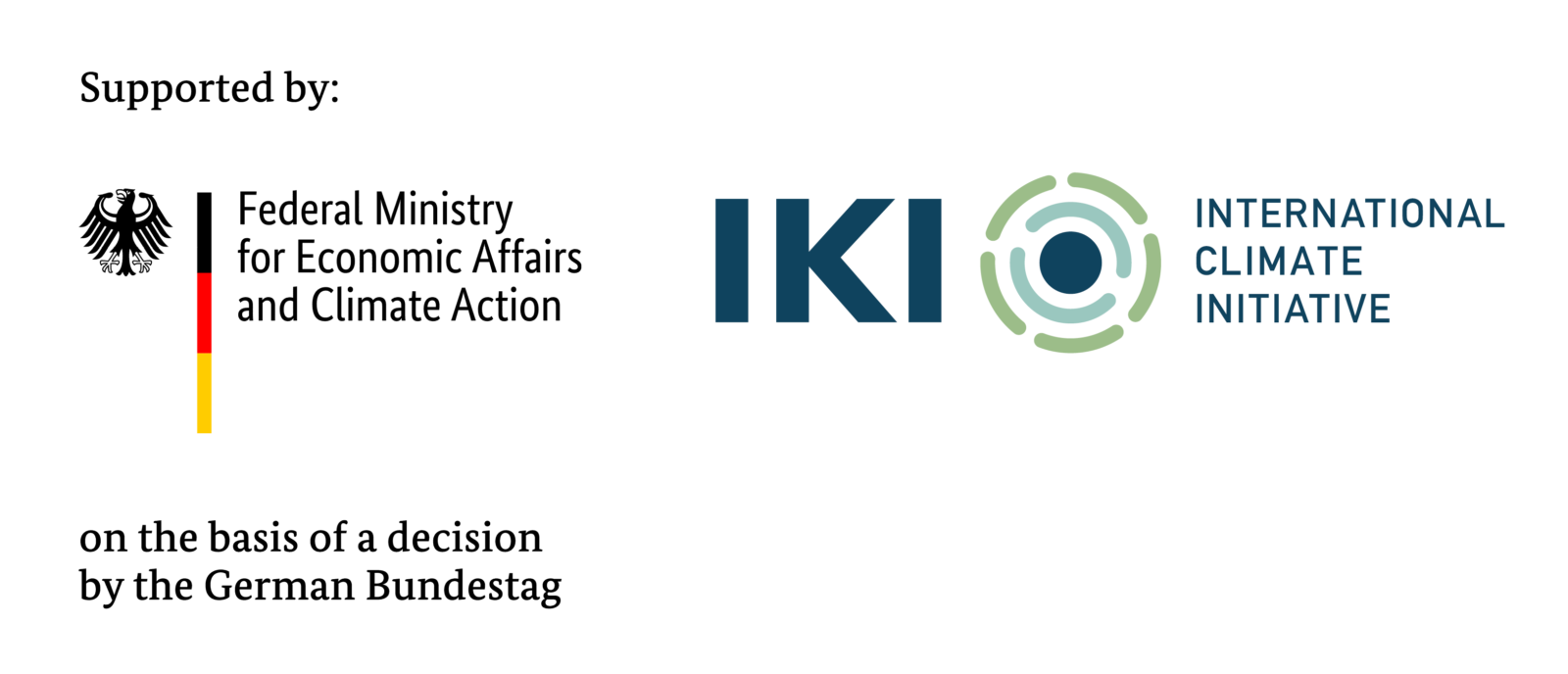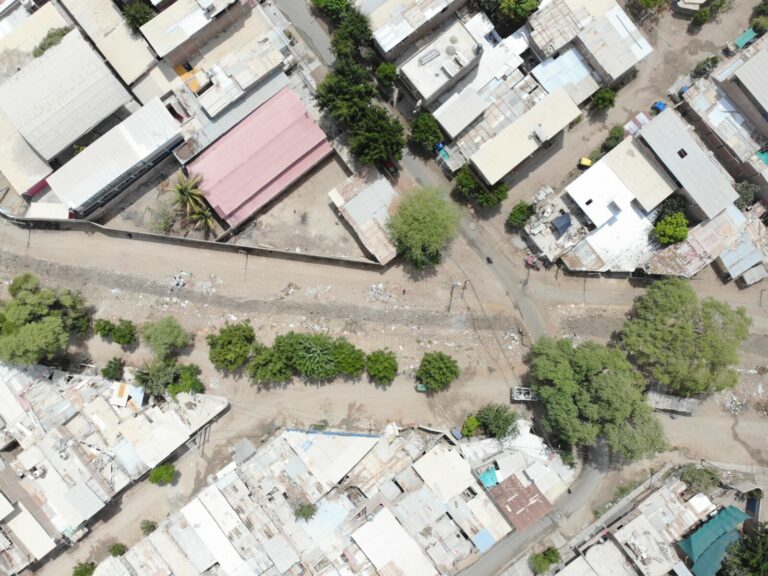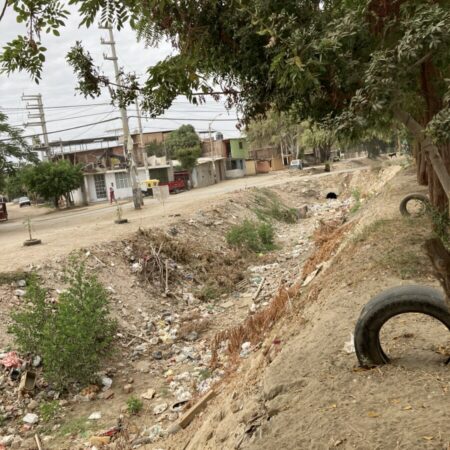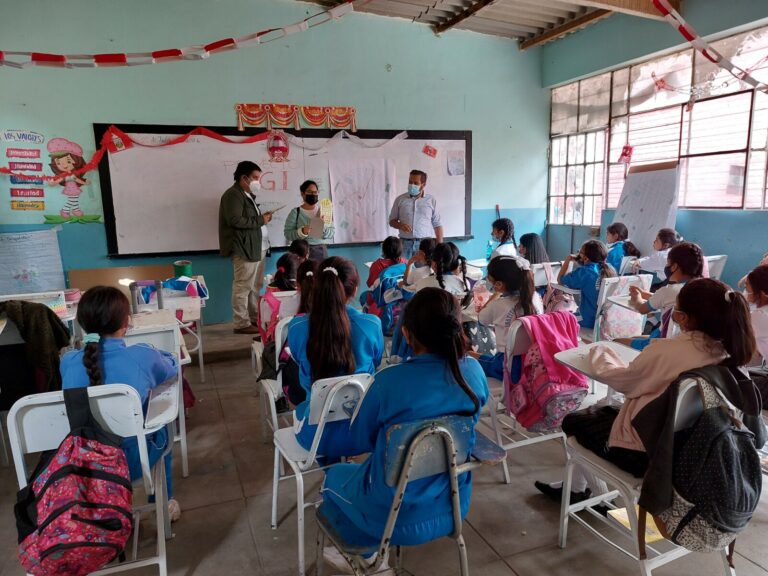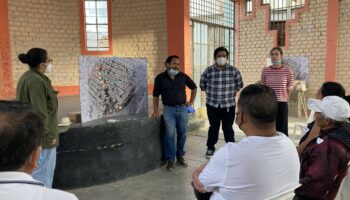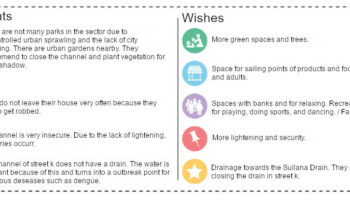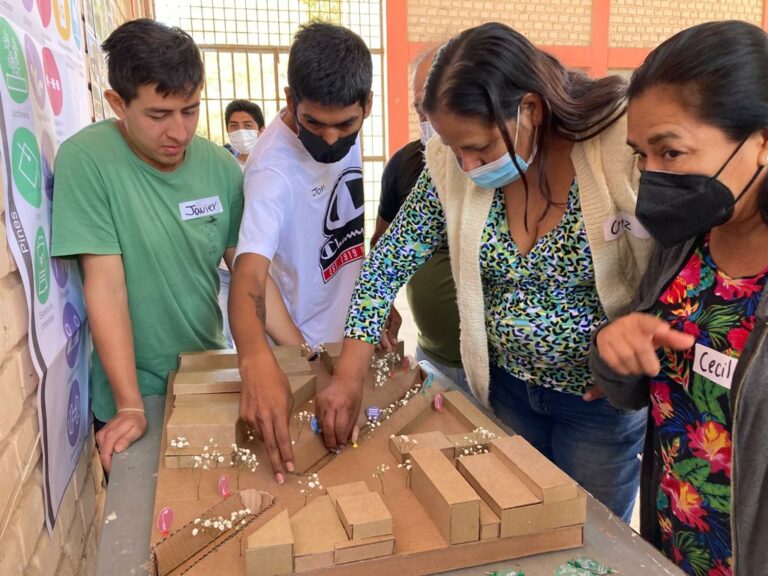In July, the local City Lab Piura team developed a series of three participatory workshops in the neighborhood called 18 de Mayo in Piura. This is the sector where the intervention of the MGI pilot project will take place. The objective of the workshops was to include the neighbors of the sector in the planning and design process by creating a space in which they can express their point of view and suggestions.
The pilot project of the Morgenstadt Global Smart Cities Initiative (MGI) in Piura consists of the recovery of a small illegal dump site , which in Piura is known as a critical point, close to the drainage channel in the 18 de Mayo neighborhood. MGI plans to recover this disused and highly contaminated space by transforming it into a new park for the city. Thus, it is expected to turn this place into a pleasant and recreational space that the neighbors of the area may consider important to take care of and to maintain. In addition, this new green space will reduce the risk of flooding in the rainy season, creating a sponge effect.
Promoting citizen participation
Working together with the neighbors in the development of the intervention is a central aspect of MGI’s contribution, since it is the members of the local community who best know the problems that the pilot project plans to solve. For this reason, it is essential to promote citizen participation in the development of the project. The comments and suggestions of the neighbors provide a great contribution that will allow the design of the public space to be adapted to their needs and ideas. Each workshop was attended by 10 to 25 people, including representatives of the Neighborhood and Community Council (JUVECO) of the sector. The activities were taught by the local MGI team with volunteers from the University of Piura, which is the local partner for the implementation of the project.
Students express their ideas
On July 21st, the first workshop was held with the students of the school 15005. This school is located in front of intervention area. Within the activities of the workshop, the girls identified their emotions regarding different points of the zone. For example, they related their school and the parks that are not in bad condition with emotions of joy, happiness, or affection. Meanwhile, they associated areas that are littered with garbage or where they feel unsafe with sadness, anger, rage or fear. In addition, they expressed their ideas for the park through drawings. The participants emphasized how much they appreciate their school and the desire to have a clean, safe, and playful space in front of it.
To include the younger population is important for the development of the project in order to have a diverse perspective of the users of the space. “If we plan the space considering the younger population, it ensures the continuity of the project because they will be the future citizens in charge of the well-being of their community,” explains Daniela Zavala Salazar, a member of the local City Lab Piura team. By knowing the conflict or safety zones, the MGI team will be able to propose transformation strategies that convert the negative emotions associated with the area into positive ones.
Points of conflict and use of the community
On July 26th, the second workshop with the local community was held to address their concerns and generate an atmosphere of trust. Als, MGI posed some questions, for example how the neighbors see the area, how they would like to improve it, as well as where they see points of conflict and uses. At the end, the participants had the opportunity to place cards in a box with their wishes for the park. They proposed to implement more lighting and security, green areas, spaces for walking, among others.
Solutions through sustainable urban planning
The last workshop was held on July 31st. Based on the comments and suggestions from the previous workshop, the MGI team presented a list of urban elements that can solve the identified problems. These elements were handed out in the form of pins of different colors. As an activity, the participants placed these pins on the points where they considered the solutions necessary and appropriate in the model of the intervention area. For example, if they had previously identified an intersection as a point of insecurity because robberies were occurring there due to the lack of lighting, the neighbors proposed in this workshop the location of a street light there.
The three days of the workshop have given valuable results for the project team and the development of the project, since a link has been created with the local community that allows a fluid conversation and exchange of ideas. The local MGI team in Piura hopes to keep working together for the next steps, which will allow the proper development of the intervention.

